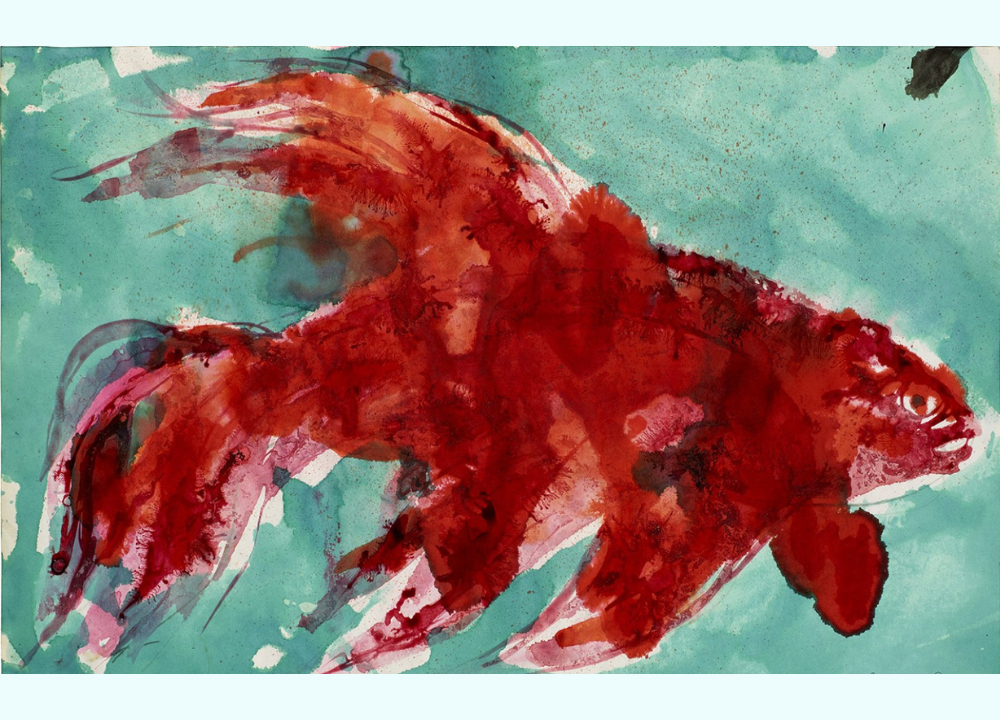The Thinker is one of the most famous sculptures in the world. Created by artist Auguste Rodin, this iconic piece represents deep thought and contemplation.
Rodin made The Thinker in the late 19th century. It was originally part of a larger work called The Gates of Hell. The sculpture shows a man sitting with his chin on his hand, lost in thought. This image captures the struggle of human existence.
It speaks to our desire to understand life and our place in it. Rodin’s work invites viewers to reflect on their own thoughts and feelings. The Thinker has become a symbol of philosophy and creativity. It continues to inspire people around the globe. Discover more about this masterpiece and its impact on art and culture.
Rodin’s Early Life
The Thinker, created by Auguste Rodin, is one of the most famous sculptures in the world. This iconic piece represents deep thought and reflection. To truly appreciate The Thinker, it is essential to explore Rodin’s early life. His childhood experiences and influences shaped his artistic vision. Rodin’s journey began in Paris, where he faced many challenges and inspirations.
Childhood And Family
Auguste Rodin was born on November 12, 1840, in Paris, France. He was the second of five children in a working-class family. His father was a police official, and his mother was a seamstress. They lived in a small apartment in a busy area of the city. Rodin’s family faced financial struggles, which impacted his early years.
Despite these challenges, Rodin showed talent in art from a young age. His parents encouraged his creativity. They recognized his love for drawing and sculpture. Rodin often visited museums and studied the works of great artists. These experiences fueled his passion for art.
- Born: November 12, 1840
- Birthplace: Paris, France
- Family: Second of five children
- Father’s Occupation: Police official
- Mother’s Occupation: Seamstress
Rodin’s family background played a key role in his development. He learned the value of hard work and determination. These lessons became essential as he pursued his career in art.
Artistic Influences
Rodin’s artistic journey was shaped by various influences. He admired the works of classical artists like Michelangelo and Donatello. Their ability to convey emotion through sculpture inspired him deeply. Rodin studied their techniques closely.
During his early years, Rodin also worked as an apprentice in a decorative arts studio. Here, he learned essential skills that would benefit his future work. His experiences in this studio exposed him to different styles and ideas.
Some key influences in Rodin’s life include:
- Michelangelo: Inspired Rodin’s focus on the human form.
- Donatello: Influenced his techniques in sculpture.
- Japanese Art: Introduced him to new perspectives and aesthetics.
Rodin’s exposure to various art forms helped him develop his unique style. He combined realism with emotional expression, setting his work apart. These early influences played a significant role in shaping The Thinker and other masterpieces.
Creation Of The Thinker
The Thinker is one of the most famous sculptures by Auguste Rodin. Created in the late 19th century, it represents deep thought and contemplation. Originally part of a larger work, The Gates of Hell, The Thinker has become a symbol of philosophy and reflection. Rodin’s process for creating this iconic piece was intricate and thoughtful.
Initial Concept
Rodin first envisioned The Thinker as a representation of Dante Alighieri, the Italian poet. He wanted to capture the essence of a man contemplating the themes of life and death. The Thinker was meant to be a figure of intellectual struggle. The idea evolved over time into a standalone piece. Here are some key points about the initial concept:
- Inspired by Dante’s Divine Comedy.
- Symbolized philosophical thought.
- Initially part of a larger work.
Rodin aimed to express the complexity of human thought. His early sketches showed a muscular figure, deeply engaged in thought. The design was both powerful and introspective. Rodin wanted the audience to feel the weight of the figure’s contemplation.
| Key Phases of Development | Description |
|---|---|
| Sketching | Initial drawings capturing the essence of deep thought. |
| Modeling | Creating a small clay model to refine details. |
| Finalizing | Transforming the clay model into a larger sculpture. |
Materials And Techniques
Rodin used various materials for The Thinker. He primarily worked with bronze, which allowed for fine details and durability. His technique involved several steps:
- Clay Modeling: Rodin started with clay to shape the figure.
- Lost Wax Casting: This ancient technique helped create the bronze version.
- Patina Finishing: The surface of the bronze was treated for color and texture.
Rodin’s choice of bronze was significant. It added strength and longevity. The smooth finish highlighted the muscular form of The Thinker. Rodin’s attention to detail made the sculpture lifelike. This choice of material also reflected his artistic vision.
Throughout the process, Rodin experimented with different poses. He wanted to capture the essence of thought through body language. The final product stands at 6 feet tall, emphasizing its monumental nature. The Thinker remains an enduring symbol of human introspection.
Symbolism And Meaning
The Thinker by Auguste Rodin is more than a sculpture. It represents deep thoughts, struggles, and the human experience. This iconic piece invites viewers to reflect on its symbolism and meaning. The Thinker embodies the act of pondering, capturing the essence of contemplation. It urges us to explore complex ideas and emotions. Through its posture and expression, it speaks to the depths of human intellect and creativity.
Philosophical Themes
The Thinker reflects various philosophical themes that resonate with many. Here are some key ideas:
- Existentialism: The sculpture embodies the struggle for meaning in life.
- Human Condition: It highlights the complexity of human emotions and thoughts.
- Introspection: The Thinker promotes self-reflection and inner dialogue.
Rodin aimed to capture the essence of human thought. The Thinker’s pose suggests a moment of deep concentration. This invites viewers to ponder their own thoughts and struggles. Here’s a breakdown of the major themes:
| Theme | Description |
|---|---|
| Existentialism | The quest for meaning in a chaotic world. |
| Human Condition | The range of human emotions and experiences. |
| Introspection | Encouragement of self-examination and thought. |
Each theme connects to personal experiences. The Thinker is a reminder to engage with our thoughts. It challenges us to find our own answers to life’s questions.
Cultural Impact
The Thinker has made a significant cultural impact. It is recognized worldwide as a symbol of thought. Many artists and thinkers have drawn inspiration from it. The sculpture has appeared in various forms of media, from films to literature. Its influence extends beyond art into broader culture.
- Artistic Influence: Inspired countless artists and sculptors.
- Popular Culture: References in movies, books, and music.
- Philosophical Discourse: Used in discussions about philosophy and thought.
The Thinker also represents the idea of intellectualism. It encourages society to value deep thinking and reflection. This piece has sparked debates about life, existence, and creativity. Its presence in public spaces invites everyone to engage with its meaning.
Overall, The Thinker remains a powerful symbol. It continues to inspire and provoke thought across cultures. Its timeless message resonates with people of all backgrounds.
The Thinker In Context
The Thinker, created by Auguste Rodin, stands as a symbol of deep thought and reflection. This iconic sculpture is often seen as a man lost in contemplation. Understanding The Thinker in context reveals its significance beyond mere form. It connects deeply with Rodin’s other works and reflects his artistic vision. The Thinker embodies the struggles of the human mind. It prompts viewers to reflect on their own thoughts and emotions.
Relation To The Gates Of Hell
The Thinker originally served a different purpose. It was part of Rodin’s larger work, The Gates of Hell. This monumental piece is inspired by Dante Alighieri’s “The Divine Comedy.” The Thinker sits atop the gates, representing the poet himself. He reflects on the souls in torment below.
Key points about The Gates of Hell:
- Created between 1880 and 1917.
- Features over 180 figures, including The Thinker.
- Explores themes of sin, redemption, and human experience.
- Represents a vast array of emotions and states of being.
The Thinker embodies the act of pondering life’s complexities. This connection enhances its meaning. Positioned above the chaos, he symbolizes reason amidst suffering.
The Gates of Hell showcases Rodin’s mastery. It highlights his ability to convey emotion through sculpture. The Thinker, therefore, serves as a focal point. It invites viewers to engage with the deeper themes of existence.
Comparison With Other Works
The Thinker stands out among Rodin’s creations. It shares themes of introspection with several of his other works. Comparing these pieces reveals Rodin’s unique style and vision.
Notable comparisons include:
| Artwork | Theme | Style |
|---|---|---|
| The Kiss | Love and Passion | Romanticism |
| The Burghers of Calais | Sacrifice and Honor | Realism |
| Monument to Balzac | Identity and Legacy | Symbolism |
Each work reflects a different aspect of the human experience. The Thinker, however, focuses on contemplation. This emphasis sets it apart.
Rodin’s sculptures often reveal raw emotion. His ability to capture the essence of thought creates a strong connection with viewers. Each piece encourages introspection, making Rodin a master of expressive art.
Evolution Of The Thinker
The Thinker, created by Auguste Rodin, is one of the most famous sculptures in the world. This iconic piece shows a man deep in thought. Over time, The Thinker has evolved in form and meaning. Understanding its evolution helps us appreciate Rodin’s vision and the sculpture’s impact on art and culture.
Different Versions
Rodin’s Thinker has several versions. Each one tells a unique story and has its own significance. The original was part of a larger work called The Gates of Hell. Here are some key versions:
- Original Version: Created in 1880, it was meant to represent Dante Alighieri.
- Bronze Versions: Rodin cast several bronzes, showcasing different sizes.
- Marble Version: A delicate interpretation carved in marble.
- Public Installations: The Thinker can be found in various parks and museums worldwide.
Here is a table showing the different materials used for The Thinker:
| Version | Material | Year |
|---|---|---|
| Original | Plaster | 1880 |
| Bronze (Various Sizes) | Bronze | 1902 onwards |
| Marble | Marble | 1904 |
Each version has its charm. They show Rodin’s skill in capturing human emotion. The Thinker invites viewers to reflect on their own thoughts and feelings.
Public Reception Over Time
When The Thinker first appeared, it sparked mixed reactions. Some praised its beauty and depth. Others questioned its meaning. Over the years, opinions evolved.
- Initial Reaction: Seen as a bold statement on human thought.
- Criticism: Some critics found it too raw and emotional.
- Acceptance: Gradually, it became a symbol of philosophy and reflection.
The Thinker gained popularity in the 20th century. It became a staple in art discussions. People saw it as a representation of deep thought and creativity. Today, it is celebrated worldwide. The Thinker is not just a sculpture; it is a cultural icon.
In different countries, The Thinker appears in various forms. Public installations have made it accessible to many. Each version continues to inspire viewers to ponder their own thoughts. Its journey reflects the changing views on art and its impact on society.
Conclusion
The Thinker by Auguste Rodin remains a powerful symbol of thought. It invites viewers to reflect on their own ideas. This iconic sculpture captures deep contemplation and human experience. Rodin’s skill brings life to stone, making it feel real. Many people visit museums to see this masterpiece.
It inspires discussions about art, philosophy, and life. The Thinker reminds us to pause and consider our thoughts. Art connects us to deeper meanings. Understanding Rodin’s work enriches our appreciation for sculpture and creativity. Explore The Thinker and discover its lasting impact on the world.




